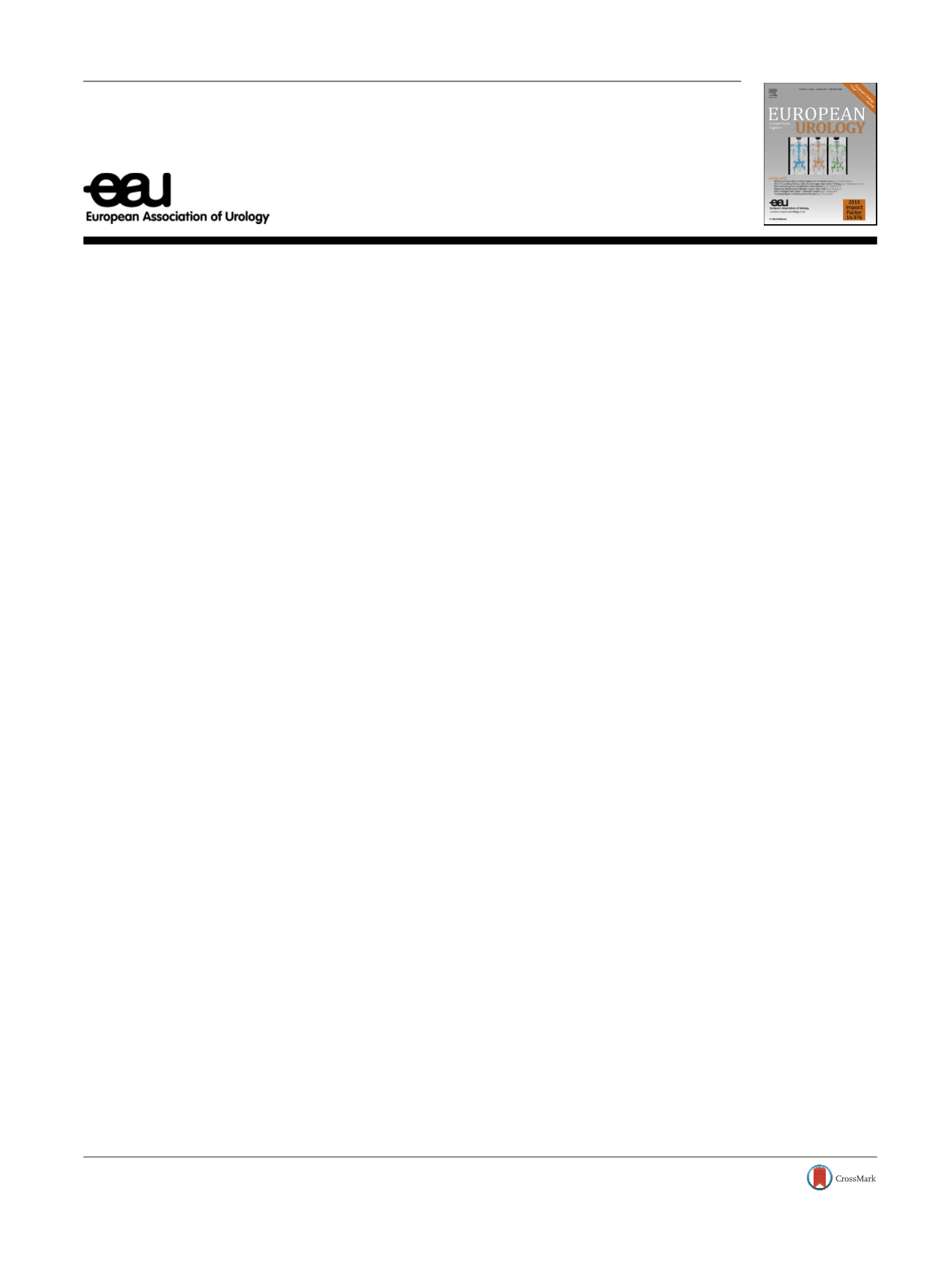

Platinum Opinion
The Search for the Missing Heritability of Prostate Cancer
Patrick C. Walsh
*James Buchanan Brady Urological Institute, Johns Hopkins Hospital, Baltimore, MD, USA
Twin studies have revealed that prostate cancer is more
heritable than other common cancers, including ovarian,
kidney, breast, and colon cancer
[1] .Paradoxically, although
the genetics of these less heritable malignancies is well
established, there is still much that is unknown about the
genetic pathogenesis of prostate cancer. For more than
30 yr, scientists and clinicians at our institution have been
searching for these genetic factors.
1.
Family history
The story began in 1987, when a 49-yr-old man asked me if
prostate cancer was hereditary. When I asked him why he
wanted to know, he responded that his father, his father’s
three brothers, and his grandfather died from the disease. At
that time, everyone knew that if a woman’s mother or sister
had breast cancer, her risk of developing the disease was
increased twofold. Why did I not know the answer to his
question? Because the available literature on prostate
cancer was sparse. There was information from the Utah
Mormon genealogical registry, but it was unclear if these
findings could be applied to the general population or
whether they represented a rare founder mutation in an
isolated population of men. To determine if the same were
true in another population, we undertook a case-control
study of 742 consecutive men who underwent radical
prostatectomy at Johns Hopkins using their spouses or
female companions as a control
[2]. Our findings, which
confirmed a 2.2-fold increased risk for men with one first
degree relative, were soon confirmed by four other studies
that reported similar results.
2.
Segregation analysis
The next step was to determine whether this familial
aggregation was caused by inherited genetic factors or a
shared environment. Using the same population, we
performed a segregation analysis that demonstrated that
the best model predicted autosomal dominant inheritance
of a rare (0.3%), highly penetrant risk allele in families with
early age of diagnosis and multiple affected family
members. This study demonstrated for the first time that
prostate cancer is inherited in a Mendelian fashion and it
provided the foundation for gene mapping
[3]. On the
basis of this segregation analysis, we developed a
definition for hereditary prostate cancer (HPC): three or
more first-degree relatives (father, son, or brother); or
three generations (grandfather, father, son); or two first-
degree relatives if both were
<
55 yr of age at the time of
diagnosis
[4].
3.
Linkage analysis
It has been estimated that 5–10% of prostate cancers may be
considered hereditary. Armed with this information, we
used linkage analysis in the search for rare, highly penetrant
genes, like the breast cancer genes
BRCA1
and
BRCA2
. Within
2 yr we identified the first prostate cancer susceptibility
gene on chromosome 1 (1q24–25) but were disappointed
when our findings could not be replicated by other
investigators
[5]. Soon, linkage was reported by others at
numerous other loci, but again few were consistently
confirmed and none fulfilled the criteria for a high-
penetrance allele like
BRCA1/2
.
4.
Complex inheritance
Next, in the absence of highly penetrant genes, investigators
in the field turned to identification of common genetic
variants (single nucleotide polymorphisms, SNPs). Because
SNPs have low penetrance, it takes many of them to cause
disease, such as type 2 diabetes mellitus. Genome-wide
E U R O P E A N U R O L O G Y 7 2 ( 2 0 1 7 ) 6 5 7 – 6 5 9ava ilable at
www.sciencedirect.comjournal homepage:
www.eu ropeanurology.com* James Buchanan Brady Urological Institute, Johns Hopkins Hospital, 600 N. Wolfe Street, Baltimore, MD 21287, USA.
E-mail address:
pwalsh@jhmi.edu.
http://dx.doi.org/10.1016/j.eururo.2017.04.0030302-2838/
#
2017 European Association of Urology. Published by Elsevier B.V. All rights reserved.
















